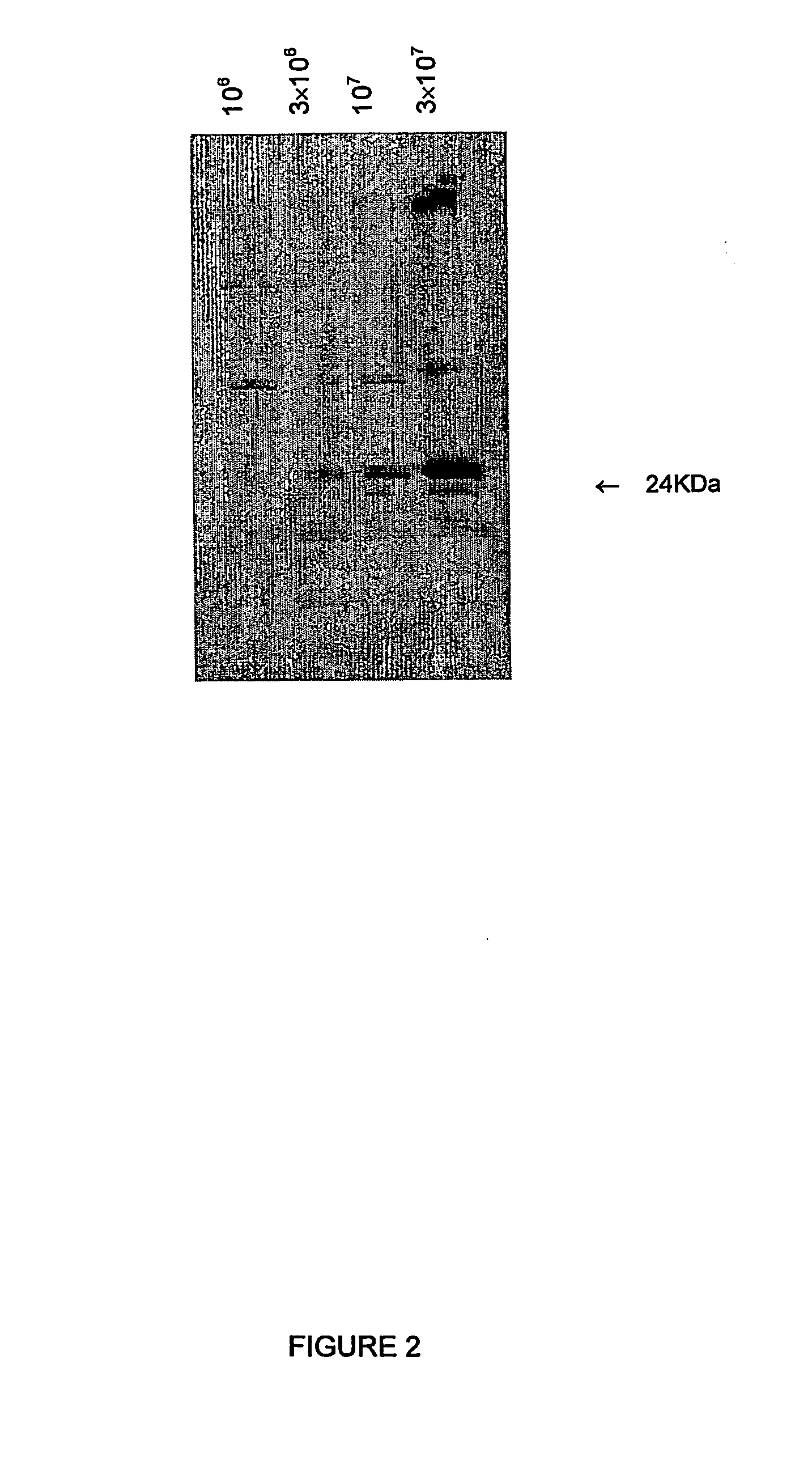Antibody to latent membrane proteins and uses thereof
a technology of latent membrane proteins and antibodies, applied in the field of antibodies to latent membrane proteins, can solve the problems of affecting the development of antibodies against, affecting the immunological function of lymphoproliferative diseases, and only temporarily debilitating lymphoproliferative diseases, and achieve the effect of inhibiting the function of proteins
- Summary
- Abstract
- Description
- Claims
- Application Information
AI Technical Summary
Benefits of technology
Problems solved by technology
Method used
Image
Examples
example
[0138] Formation of ΔTES-C9 Proteoliposomes.
[0139] Paramagnetic proteoliposomes containing a truncated form of LMP1 (ΔTES, aa 1-207) were obtained. The mutant contains the cytoplasmic N-terminus, the six transmembrane domains and 20 aa of the C-terminal tail of LMP1; it also contains a C-terminal nonapeptide (C9) tag, recognized by the 1D4 monoclonal antibody. The protein was expressed in COS-7 cells. COS-7 cells were transfected as described. 108 cells were then lysed in 10 ml of solubilization buffer for 30 min at 4° C. Cell debris was removed and the cleared lysate incubated with 2×108 1D4-streptavidin-coated beads for 4 h at 4° C. on a rocking platform.
[0140] Paramagnetic beads were conjugated with 1D4 and streptavidin and used to capture the mutant ΔTES-C9 from the cell lysate. The beads were than mixed with solubilised lipids containing biotynil-DOPE, that self-assemble around the beads producing the lipid bilayer.
Protein Composition of ΔTES-C9 Proteoliposomes.
[0141] The ...
PUM
| Property | Measurement | Unit |
|---|---|---|
| time | aaaaa | aaaaa |
| shape | aaaaa | aaaaa |
| protein composition | aaaaa | aaaaa |
Abstract
Description
Claims
Application Information
 Login to View More
Login to View More - R&D
- Intellectual Property
- Life Sciences
- Materials
- Tech Scout
- Unparalleled Data Quality
- Higher Quality Content
- 60% Fewer Hallucinations
Browse by: Latest US Patents, China's latest patents, Technical Efficacy Thesaurus, Application Domain, Technology Topic, Popular Technical Reports.
© 2025 PatSnap. All rights reserved.Legal|Privacy policy|Modern Slavery Act Transparency Statement|Sitemap|About US| Contact US: help@patsnap.com



